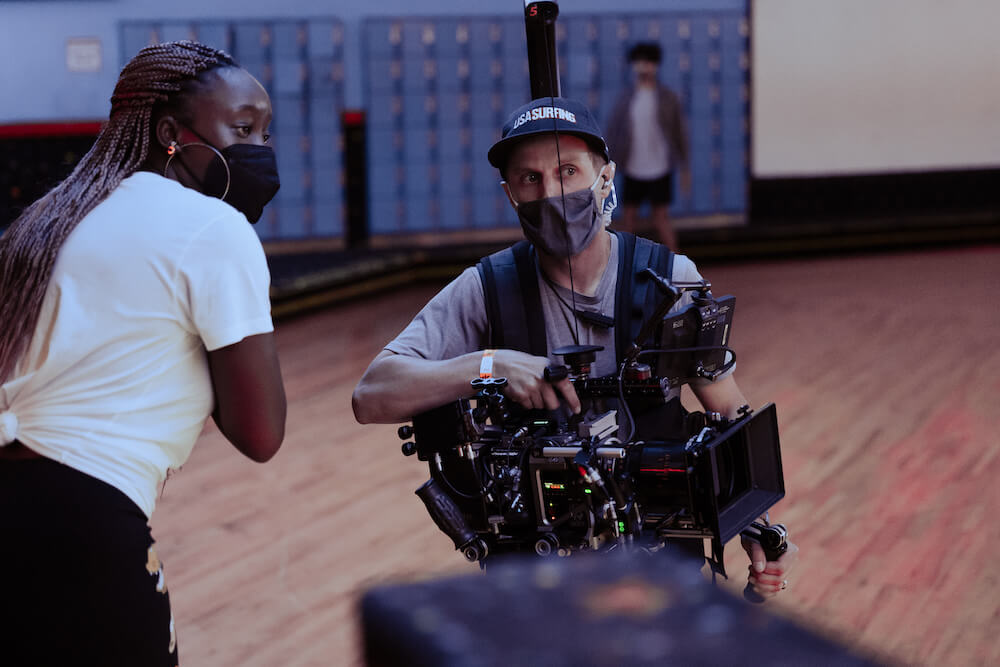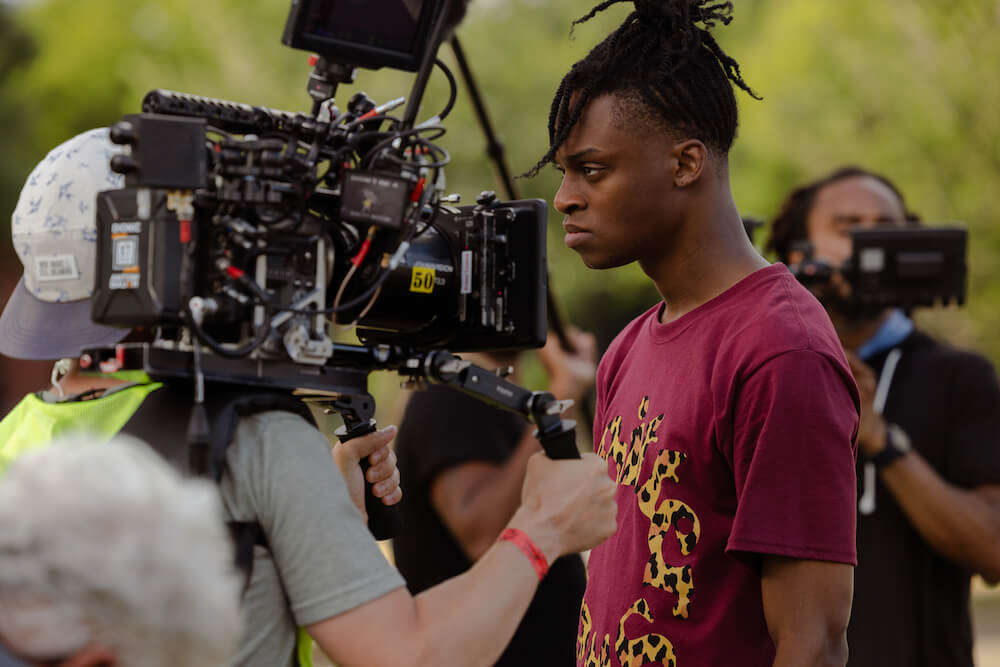Cinematographer Alan Gwizdowski on Honk For Jesus. Save Your Soul.

It’s not often that a cinematographer is tasked with shooting a film within a film, but for writer-director Adamma Ebo’s feature Honk For Jesus. Save Your Soul., that’s exactly what cinematographer Alan Gwizdowski needed to do. The 2022 Sundance darling centers around the tireless campaign of a Southern Baptist first lady (Regina Hall) to get back to the main stage after the scandalous fall from grace of her megachurch minister husband (Sterling K. Brown).
Among her efforts is the hiring of a documentary crew to reframe her husband’s story — a plot conceit that presented Gwizdowski with the opportunity to work in both narrative and documentary styles, for which he employed Panavision T Series anamorphic and Primo spherical primes, respectively. The cinematographer recently took some time to catch up with Panavision and discuss his approach to the movie’s dual looks.
Panavision: How would you describe the movie’s visual style?
Alan Gwizdowski: In order to tell the story of Honk for Jesus, we needed to create two different looks and strategically choose when to show each one. Adamma and I created a visual language that allowed the viewer to differentiate between the documentary being told within the film and what’s going on behind the documentary. This movie combines a stern, raw cinematic narrative and a stylistic indie documentary with a video look.

Were there any particular visual references you looked at for inspiration?
Gwizdowski: The cinematic style was heavily influenced by the Cohen brothers’ No Country for Old Men as well as long-take scenes from Boogie Nights and Birdman. Several docs influenced our ‘documentary’ style. The chaotic camerawork was influenced by the evangelistic sermons in Marjoe. The follow-doc style, drone footage and B-roll were influenced by Weiner and true-crime-style docs like Making a Murderer and The Jinx. I also employed techniques I’ve learned over the years from my own projects, like Nonsuch with director Jackson Adams as well as many faux-doc projects with director Tony Yacenda. For all the archival church footage, we tried to emulate actual sermons from megachurch pastors.
What brought you to Panavision for this project?
Gwizdowski: The production was already in contact with Panavision before I was attached. Our UPM, Carolina Groppa, has a great relationship with Panavision and had already started talks with [Panavision Atlanta sales executive] Mintie Pardoe about this movie. This was my first feature with Panavision, and I just happened to walk into a great opportunity to utilize their expertise and beautiful lenses.

How does this project compare to others in your career?
Gwizdowski: This project was unique because of how I needed to differentiate but also combine two different styles in a way that made sense to the viewer — it was one big puzzle. I’ve worked on several faux-documentary-style projects as well as traditional narratives, but they all stayed within their respective formats for the entirety of the shoot. Needing to design a story that changed back and forth and at points combined the styles was a welcome challenge.
How did you become interested in cinematography?
Gwizdowski: I got into cinematography by making skateboard videos and shooting still photography as a kid. Shooting skits and interludes between skate-video segments was my first foray into creative storytelling. I love the challenge and creativity in designing visuals, leaving the viewer guessing how it was done, and constantly trying to come up with new techniques.
